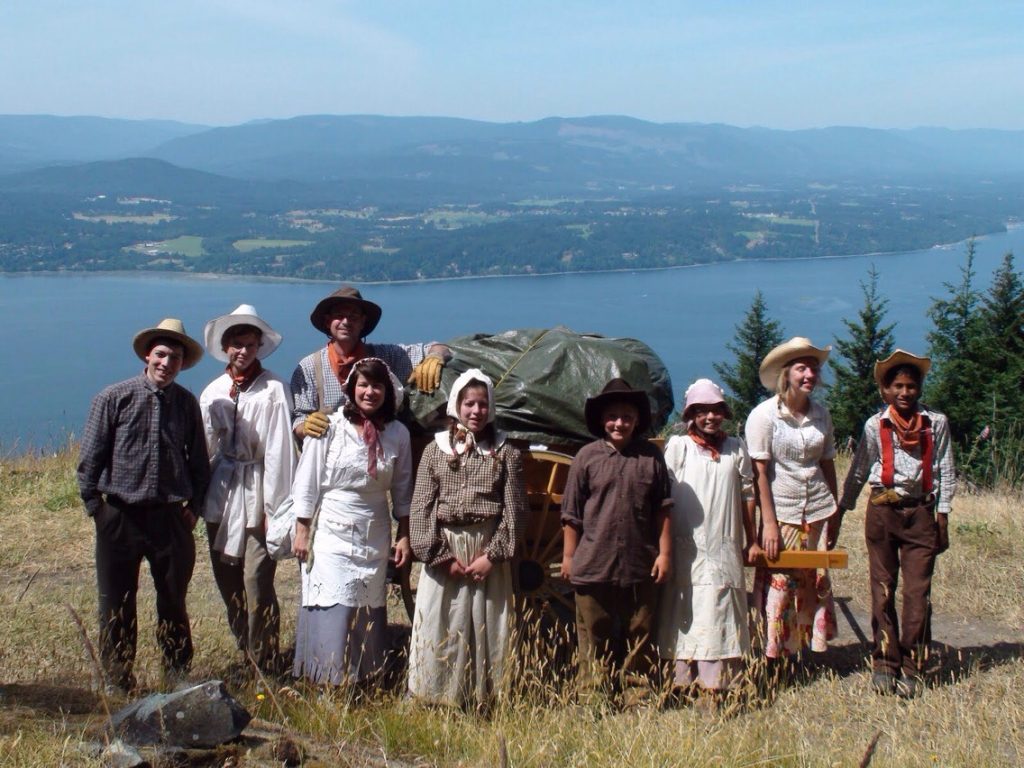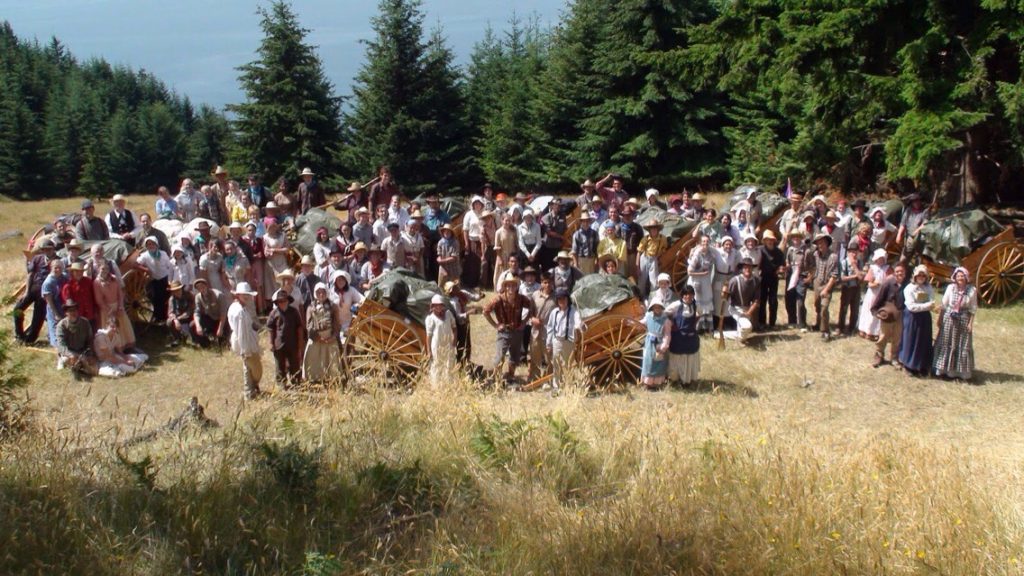
Wearing bonnets, pulling handcarts and learning to square dance are only a few elements of the pioneer trek re-enactments in which Mormon youths participate each summer.
The United States is not the only place where Mormons celebrate and honor the Mormon pioneers who crossed the plains to Salt Lake City. Regardless of their location or pioneer heritage, youths worldwide gather to do pioneer treks.
As an 18-year-old, Melina Morales of Buenos Aires, Argentina, participated in a three-day trek at Camp Kilgruman in Cavanagh, Cordoba, Argentina. Morales, age 20, and her group walked around 15 miles over the three days in 104 degree weather in February 2016.
The trek had a Utah pioneer theme, Morales wrote in a translated email. The participants in her stake wore traditional pioneer clothing and were sorted into families. Their trek included activities like river crossings, pioneer games and a testimony meeting. The families cooked rice and pasta for their meals.
Morales said one of her most powerful experiences during the trek was crossing a river on the ranch after it had risen because of rain. She was asked to carry her trek ma’s 7-month-old baby across the river. Partway through, Morales’ arms began to tire, and she realized she was far from her trek family and still had a long way to go.
Worried for the baby, she said a prayer and kept moving forward. She said she remembered she was a daughter of God, and she could overcome any obstacle with God’s help.
Morales slipped but didn’t fall on her way to the other side of the river. When she reached the bank, there was a line of youths singing. It was an unforgettable experience, she said.
Morales, who does not have pioneer heritage, said trek was a spiritual experience and helped her to understand and to feel gratitude for the sacrifices the pioneers made.
BYU computer engineering junior Ezra Clark also took part in trek in a foreign country. Clark’s father is a dentist in the U.S. Army, so the family has lived in many different locations.
When Clark participated in trek, his family was living in Kottweiler-Schwanden, Germany, where there were enough U.S. military families to form an American ward in the region. It was with this ward that Clark participated in a 5K walk and run trek event in 2013.
The 5K was a loop through the pastures and forests of Kottweiler-Schwanden. There were different checkpoints where people told pioneer stories, he said. As a 17-year-old, Clark learned about the Utah pioneers thousands of miles from traditional trek sites like Martin’s Cove or Rocky Ridge.
“A lot of what we have today with the gospel, we can look back, and it’s because of the things pioneers did for us and the legacy that they left,” Clark said about what he learned from his experience.
For Clark, who has pioneer heritage, a 5K in the countryside complete with a T-shirt and a barbecue taught him he has a lot to be thankful for, he said.

Isabel Fisher, a sophomore studying human development at BYU, is from Victoria, British Columbia. Fisher participated in a four-day trek as a 14-year-old in July 2010 on Salt Spring Island in British Columbia. When Fisher’s group of around 150 arrived on the island, they were separated into trek families.
As Fisher’s trek family began shopping for food at the makeshift store, her trek pa was “tarred and feathered” with molasses and feathers. The youth had to clean their pa’s back before they could begin walking, Fisher said.
Other activities during Fisher’s trek reflected the harsh realities of pioneer life. Leaders re-enacted the Haun’s Mill massacre, and the youths watched as one ma acted out the burial of a baby.
Fisher dressed and ate like a pioneer. The youths ate bread, potatoes, fried dough and cabbage for the week.
“It would’ve been a weird sight because there were a lot of kids who would sit when we stopped for a break,” Fisher said. “There would be kids sitting on the side of this little gravel road eating cabbage — just eating literally raw cabbage.”
One day the company encountered leaders acting as friendly Native Americans. Fisher said it was a treat to get smoked salmon from the Native Americans.
Fisher said there were fun times for her on the trail as well. One night a fiddler played for a dance, and she said she remembers sleeping under the stars and playing pioneer games. The youth also opened letters from their parents and participated in the women’s pull.
“We only had three or four girls, and we were all younger except for one of us,” Fisher said of the women’s pull. “I was in the front and I’m pretty short. I’m 5 foot 2 (inches). I was pulling our handcart and we go up this hill and it’s back-heavy, so I literally just go flying in the air, and I’m just hanging there by the handcart.”
The other girls had to help her down, Fisher said.
Fisher said her experience at trek taught her important lessons as a 14-year-old.
“I think just putting it into perspective, going through that, and walking so much and not eating what I would normally eat and just being with all those other youths — all of it altogether really strengthened my testimony,” Fisher said. “They wouldn’t have gone through that if it wasn’t true.”
The Handcart Trek Re-enactments handbook for leaders encourages pioneer trek re-enactments as a way to strengthen the spirituality of youth everywhere, not just in the United States. The handbook advises leaders to focus on goals such as building testimonies, creating unity, learning and appreciating LDS Church history, and appreciating blessings more fully.




